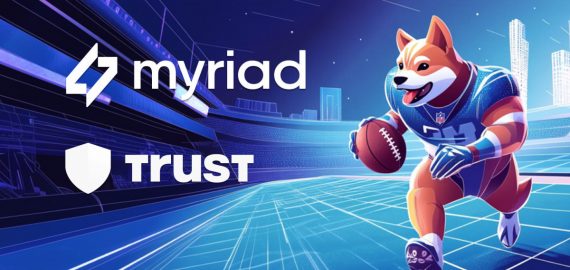The Future of Stablecoins in Europe: MiCA Regulations Bring New Opportunities and Challenges for Crypto Exchanges


In Brief
The Markets in Crypto Assets (MiCA) law, set to take effect in the EU later this year, is expected to significantly impact the stablecoin market.
Stablecoins are dominating the market as a result of the surge in popularity of digital assets brought about by the development of cryptocurrencies. Since they may make transactions more safe and effective, stablecoins—which are aimed to keep their value constant in relation to a certain item or group of assets—have become quite popular. However, as this relatively new asset class develops, mechanisms for regulations are being created regularly to safeguard consumers and reduce risks.
The Markets in Crypto Assets (MiCA) law, which will introduce an extensive structure for regulating stablecoins and other crypto assets, is scheduled to go into effect in the European Union (EU) later this year. The stablecoin market in the EU is predicted to be significantly impacted by this law, and companies in the space are keeping a careful eye on developments to retain compliance and continue operating.
Kraken To Follow All the Rules for Keeping USDT
Concerns about the possible delisting of the Tether (USDT) stablecoin in Europe have recently been addressed by Kraken, one of the biggest participants in the cryptocurrency exchange market. Users may rest easy knowing that Kraken, with its global head of asset growth and management, Mark Greenberg, has no imminent intentions to delist USDT and is going to adhere to all legal standards.
In reaction to a Bloomberg story that said Kraken was proactively evaluating plans to delist USDT from the European market perhaps in order to fulfil its obligations with MiCA, Greenberg released a statement. Marcus Hughes was quoted in the paper as saying that the exchange was planning for every scenario, including the possibility that listing some coins, like USDT, could not be feasible.
Kraken’s stance was explained by Greenberg, who said that the company continues to investigate all possibilities for providing the stablecoin under the impending MiCA regime and that European clients enjoy having access to USDT. This position demonstrates the significance of USDT in the European cryptocurrency industry and Kraken’s dedication to serving clients’ demands. All of that while abiding by legal restrictions.
European MiCa Regulation and the Stablecoins
Stablecoins are given special attention by the MiCA law, which seeks to provide an all-encompassing framework for regulating crypto assets inside the EU. Stablecoins are subject to strict regulations under MiCA to promote consumer safety and economic security because of their capacity to enable mass adoption and use for commercial operations.
The necessity for stablecoin issuers to seek licenses from the appropriate EU authorities is one of the main features of MiCA. Issuers are also required to fulfil a number of responsibilities, including releasing a “white paper” that has been authorised by the national governing body, following control protocols, keeping sufficient reserves, and putting in place reliable custody solutions for the underlying assets.
Additionally, MiCA adds new standards for “significant” stablecoins, which are based on factors including the number of reserve assets, the number of holders, and the possible influence on financial stability. Significant stablecoin issuers will be subject to stricter regulations, which may include more stringent requirements for capital, rules governing liquidity, and interoperability.
The establishment of MiCA is indicative of the European Union’s acknowledgement of the possible hazards linked to stablecoins and the requirement to create a uniform regulatory structure to guarantee consumer safety and preserve the economic order. MiCA seeks to promote development while reducing possible dangers, including money laundering, financing of terrorism, and harm to consumers, by establishing precise guidelines and norms.
While Kraken has said that it would abide by MiCA and keep providing USDT to its European clients, other significant exchanges have adopted a different stance. Competitor OKX removed USDT from the European market in March, citing the requirement to adhere to the impending MiCA laws. Another well-known exchange, Binance, had already declared that it will delist USDT in Europe, although it hasn’t done so yet.
These exchanges’ disparate strategies serve as a reminder of the difficulties involved in negotiating the constantly changing laws and regulations around stablecoins. To guarantee regulation, some exchanges have opted to deliberately delist specific stablecoins, but others—like Kraken—are looking into methods to keep access while abiding by the new regulations.
Europe Is Not the Only to Push Stablecoins
In addition to the stablecoin scene, Kraken is involved in a legal dispute with the Securities and Exchange Commission (SEC) of the United States. The SEC filed an action against Kraken in November 2023, claiming that the exchange had been running an unlicensed platform for dealing securities. Following Kraken’s settlement of allegations pertaining to its previous staking service, this lawsuit was filed.
Kraken submitted a move to dismiss the SEC’s complaint in February 2024, arguing that the commission’s allegations were based only on a registration-based defence of Kraken’s activities as an unlicensed securities business. According to Kraken, crypto that are designated as SEC-compliant ought to be handled more like goods than like securities.
But Kraken has now taken a more assertive stance, asking the US court to reject the SEC’s allegations in order to prevent a “significant reordering” of the country’s financial regulatory framework. In response, the SEC filed a response opposing Kraken’s move to dismiss, claiming that it has the legally mandated right to enforce securities intermediaries’ registration obligations.
The current legal dispute between the SEC and Kraken brings to light the larger regulatory issues that the US bitcoin market faces. Industry participants like Kraken are fighting back against the SEC’s asserted authority over specific cryptocurrency assets and activities, advocating instead for a more nuanced approach that takes into account the special qualities of cryptocurrencies.
Market participants like Kraken must navigate complicated and sometimes contradictory legal requirements as the legal landscapes of stablecoin and cryptocurrency continue to change in the EU and the US. Exchanges and other market players need to strike a balance between meeting client requests and promoting innovation within the quickly expanding cryptocurrency ecosystem, even if compliance is of utmost importance.
Talking about the regulations in the US, since there isn’t already a suitable regulatory framework for stablecoins, US Treasury Secretary Janet Yellen has urged Congress to establish one. Stablecoins, according to Yellen, are not yet common enough to represent a threat to the US financial system, but if they are, they may provide a traditional run risk—that is, a danger of a bank run on assets. She also argued that customers may be at risk from digital assets in the absence of regulation, which connected them to the larger financial crisis of the previous year.
Broader Adoption of MiCa Regulation
Unquestionably, the acceptance of stablecoins in the EU will be influenced by the introduction of MiCA. Exchanges like Kraken, who have pledged to abide by the new rules, will be essential in enabling stablecoin accessibility while meeting the strict guidelines established by MiCA.
Still, MiCA’s deeper effects go outside the stablecoin space. Other governments facing the difficulties of regulating this quickly developing asset class may find inspiration in the legislation’s all-encompassing approach to crypto asset regulation. As a result, authorities, business leaders, and investors from all around the world will be keenly observing the application and results of MiCA.
The approaching introduction of MiCA is driving a substantial upheaval in the stablecoin ecosystem inside the European Union. Some exchanges have adopted a more cautious stance by delisting specific assets, while others, like Kraken, are dedicated to upholding access to well-known stablecoins like USDT while complying with the new restrictions. Simultaneously, the ongoing legal dispute in the United States between Kraken and the SEC highlights the need for a comprehensive and sophisticated strategy as well as the larger regulatory problems around cryptocurrencies.
Disclaimer
In line with the Trust Project guidelines, please note that the information provided on this page is not intended to be and should not be interpreted as legal, tax, investment, financial, or any other form of advice. It is important to only invest what you can afford to lose and to seek independent financial advice if you have any doubts. For further information, we suggest referring to the terms and conditions as well as the help and support pages provided by the issuer or advertiser. MetaversePost is committed to accurate, unbiased reporting, but market conditions are subject to change without notice.
About The Author
Victoria is a writer on a variety of technology topics including Web3.0, AI and cryptocurrencies. Her extensive experience allows her to write insightful articles for the wider audience.
More articles

Victoria is a writer on a variety of technology topics including Web3.0, AI and cryptocurrencies. Her extensive experience allows her to write insightful articles for the wider audience.

















































